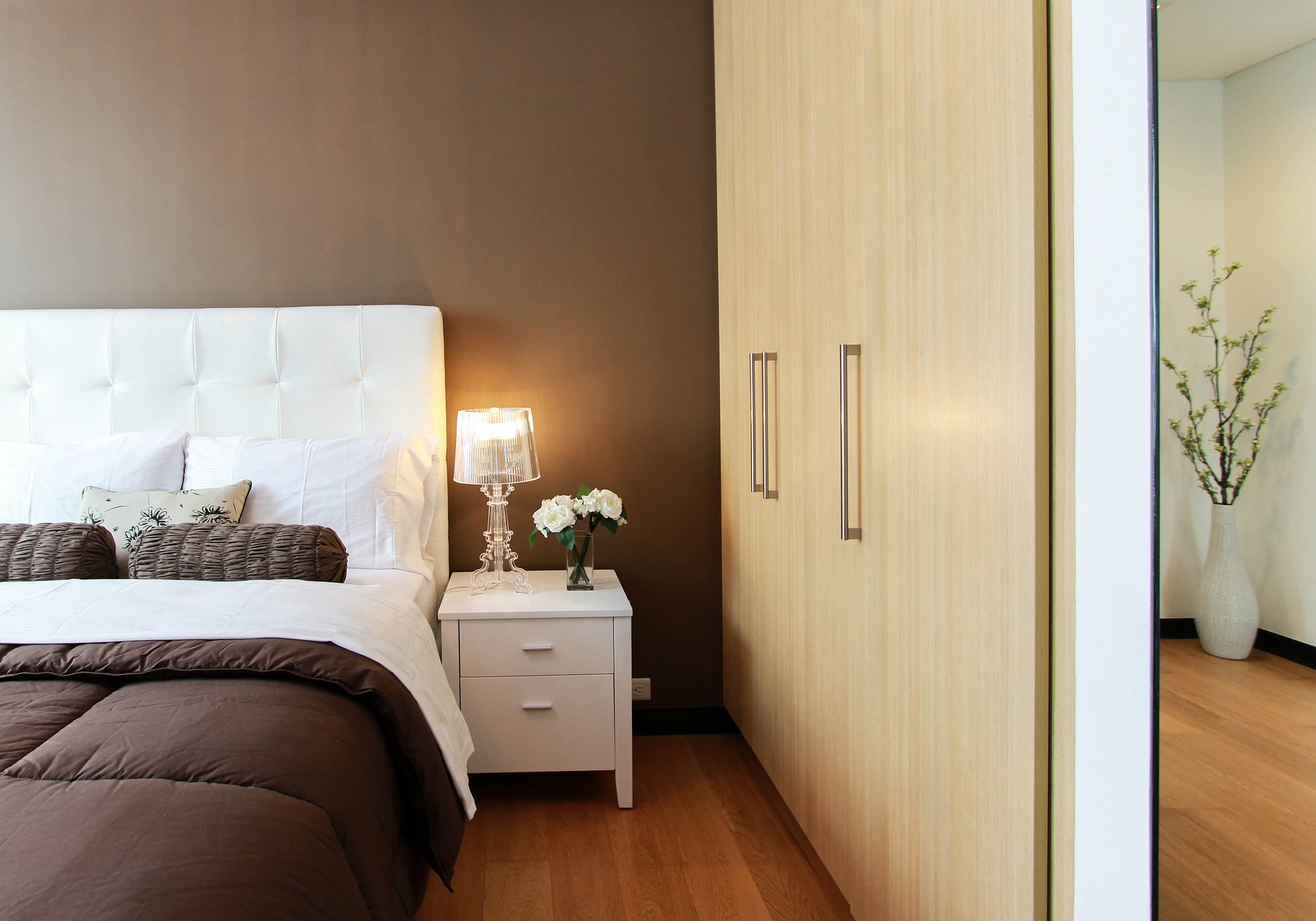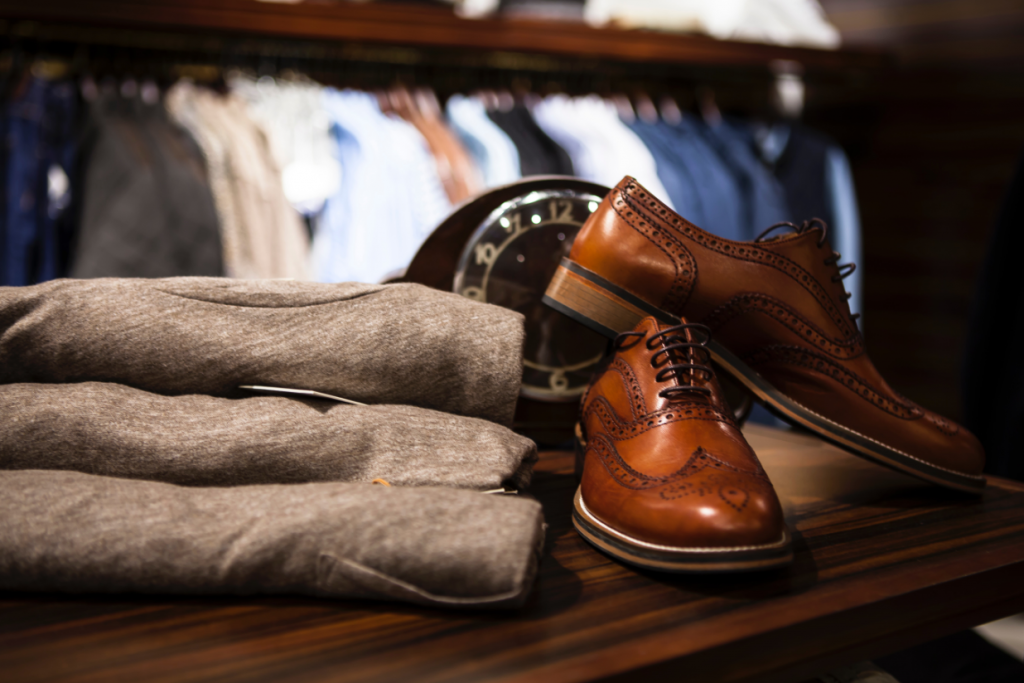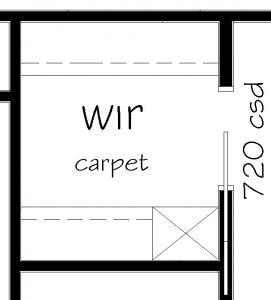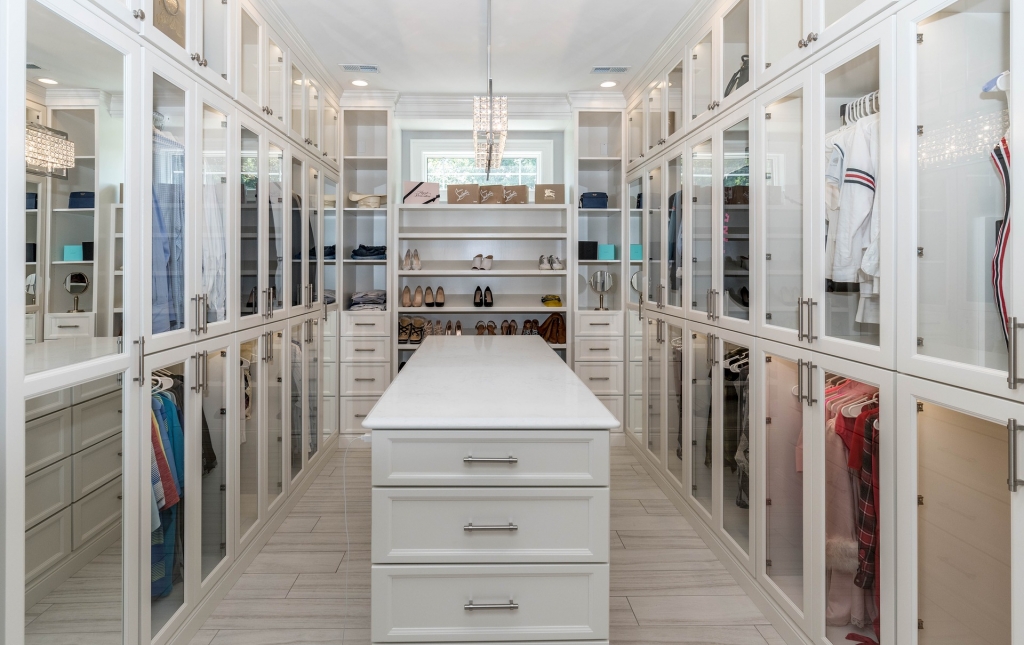A wardrobe by definition is a room or closet where clothes are kept. It is a known fact that a man should never underestimate the size of a women’s wardrobe and therefore should always allow for the largest possible size when building. This will always keep his wife happy and only add to the value of a home.
Wardrobes are expected in newer homes, but are commonly missing in older established homes. All bedrooms should have built in or walk in wardrobes. Built in shelving units improve storage and aid to organised space. However the extent and type of shelving is subject to builder and what inclusions are provided when purchasing a new home.
Standard Sizes
The standard depth of a wardrobe is 530mm (600 including wall), anything smaller will effect hanging space. Build in wardrobes are often limited to the room sizes and the general layout of the house. In many investment homes wardrobes are designed to suit standard door sizes purely to save costs. Wasted, hard to reach space down either end of the wardrobe is something most people try to avoid.
- 1300 wardrobe (1200 robe slider) – This is very small for a bedroom and only suits a single person with minimal storage.
- 1600 wardrobe (1500 sliding door) – Good size for a single person not requiring large amounts of storage, very small for a couple. Common size for rooms of 2.8m
- 1900 wardrobe (1800 sliding door) – Great size for a single person with extra storage, very small space for couple with minimal storage. Common size for rooms of 3.0m
- 2200 wardrobe (2100 sliding door) – Luxury size for a single person with extra storage. Small size or a couple with minimal storage. Common size for rooms of greater than 3.0m
- 2500 wardrobe (2400 sliding door) – Comfortable size for a couple if with out a abnormal collection of clothes. 1200 hanging space per person is adequate for the average person.
Any robe slider with double mirror doors that is greater than 2100 can have maintenance issues if cheaply manufactured. The wheel and track sliders mechanism can be easily damaged due to the extra weight of the mirrored doors. If this is the case ensure the roller and track system is heavy duty or alternatively use a 3 panel slider instead.
Wardrobe doors
Hinged doors are generally a more traditional style and offer greater access with the entire wardrobe being open. However hinged doors require more space to open the door and access can be tight in small rooms. Hinged doors do not come with mirrors unless fixed to the door itself on request.
Sliding doors come in standard lengths and can also be easily custom made to fit any sized wardrobe. Sliding robe doors come in a range of colours with plain vinyl or mirror doors, making them a popular modern choice. Mirrored doors always make a room bigger and are a great trick to make a room feel bigger than what it is. The only down fall with sliding robe doors is the wardrobe can only be half opened at one time, this is more of an issue with smaller sizes.
Standard door & window heights are 2100 for 2440 & 2590 ceiling heights. It is recommended to use 2400 high doors & windows for ceiling heights of 2700 or greater. Standard 2100 high doors & windows look out proportion on higher ceilings.
Walk in Wardrobes
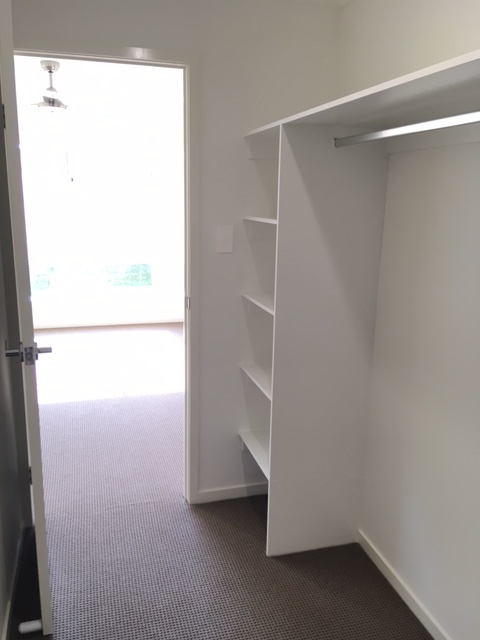
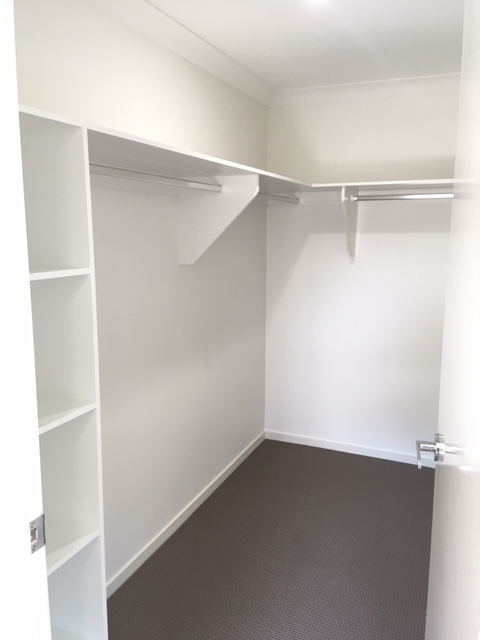
Walk in robes (WIR) are an open or closed room accessed from a bedroom, used to store clothes and personal belongings. WIR’s do not require a window or ventilation as they are not classified as a habitable room. Some WIR’s can lead through or provide access to an ensuite or private bathroom depending on the design and layout. Furthermore, a WIR always adds value to a property not to mention the extra space for a women’s treasured shoe collection
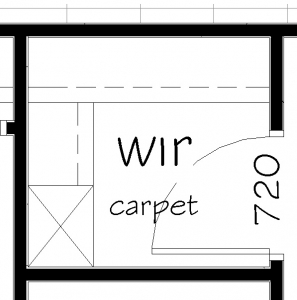
1430 x 1500 Walk In Robe – Corner
Minimal recommended sizes for a WIR is 1430mm wide x 1500mm or desired depth. 900mm between walls and shelving / hanging allows comfortable egress, alternatively anything less will close in the WIR making it too tight to access clothes and storage. Corner joinery and shelving in WIR’s can be awkward and often waste space. Alternatively a larger gully type WIR is more attractive option and a better use of space.
Minimize corners, as they can be dead space for hanging items. These hanging items clash or can become lost when tucked away out of sight.
Wardrobe layouts
Hanging space
Most standard wardrobes consist of one hanging rail attached to the underside of a storage shelf. In most cases this is all that is needed, however a lot of potential hanging space can be wasted. A well organised wardrobe will have two rails to maximise the space for long and short hanging items.
Dresses and long coats need long hanging space, while shirts, skirts and trousers need shorter hanging space. Most storage shelves and hanging rails are approximately 1600-1700 high. A second hanging rail would fit in the middle at half this distance. The question is; how much long verses short hanging space is needed? This is a personal preference depending on your style and climate. A minimum of a quarter of all hanging space for longer items is a good balance for most people.
Drawers and shelves
There are many options for shelves and draws. Generally these are an upgrade feature in most building packages, they range in shape, size and layouts depending on the builder. Shelving is commonly 45 centimetres deep and often includes pegs to allow you to adjust the height of the shelf to personal preferred heights. Well designed shelves and draws can really increase your storage capacity keeping your clothes well organised and free from dust.
Shoe shelving
Many ladies will tell you how important shoe storage is and quickly point out Carrie Bradshaw’s WIR from the famous TV series “Sex and the City”. Keep in mind shoe storage is a luxury and never makes it into investment homes. However if you are a Carrie Bradshaw enthusiast and shoes are your thing. A good starting point is approximately 25 cm height for heels and flats, with approximately 50cm for boots. You will more than likely need to talk in-depth to a robe specialist or interior designer to acheive the perfect wardrobe layout to suit your personal attire.

